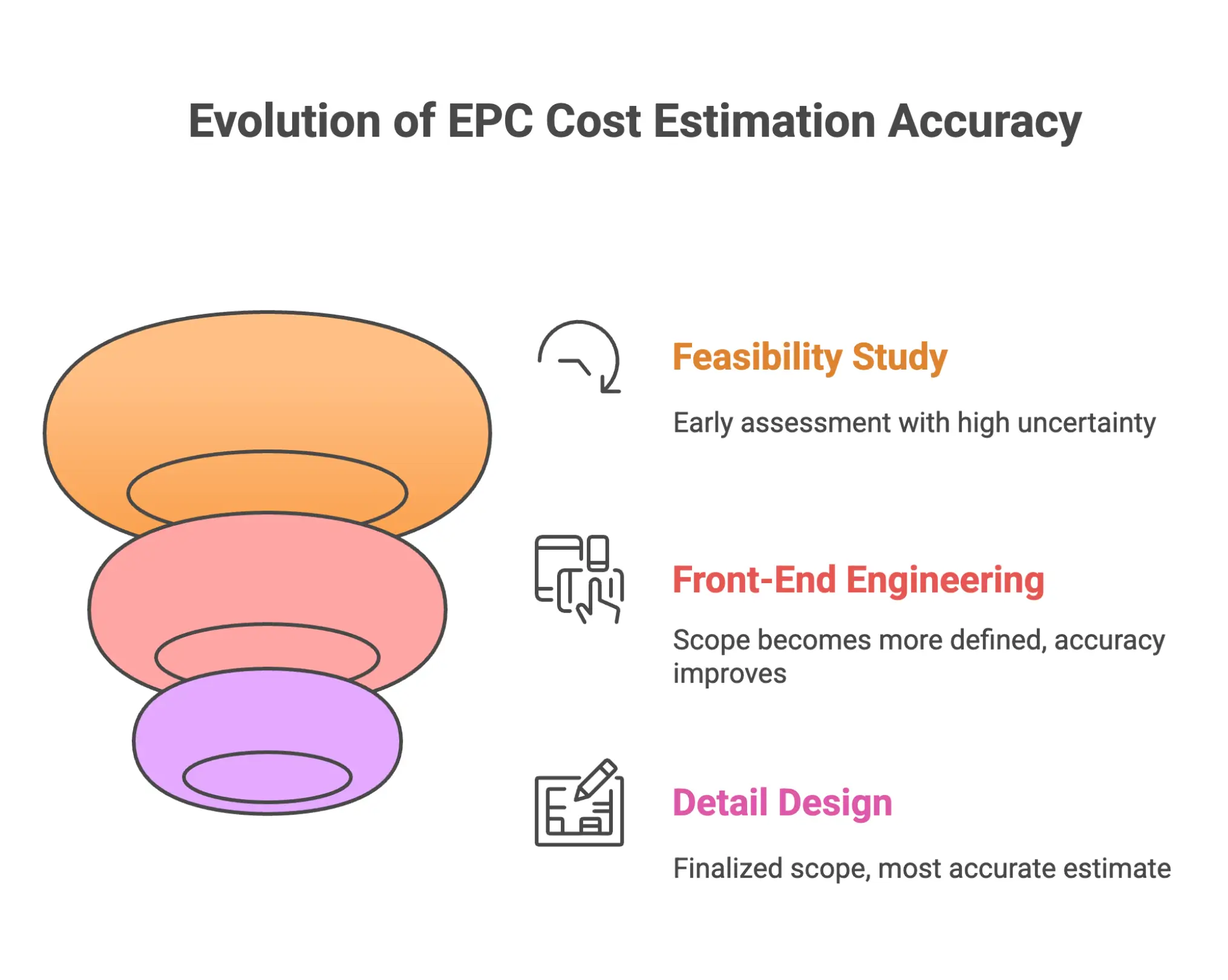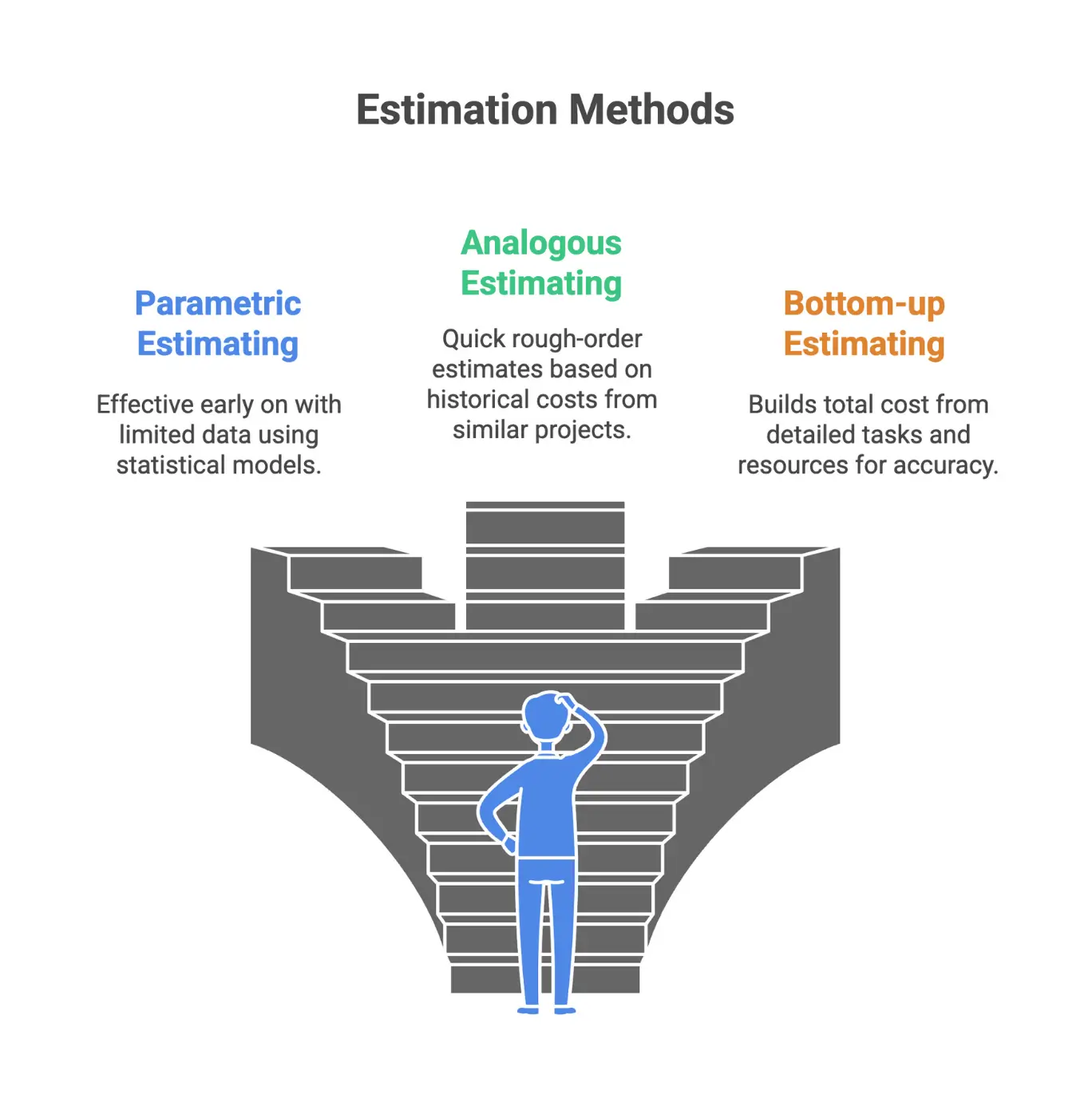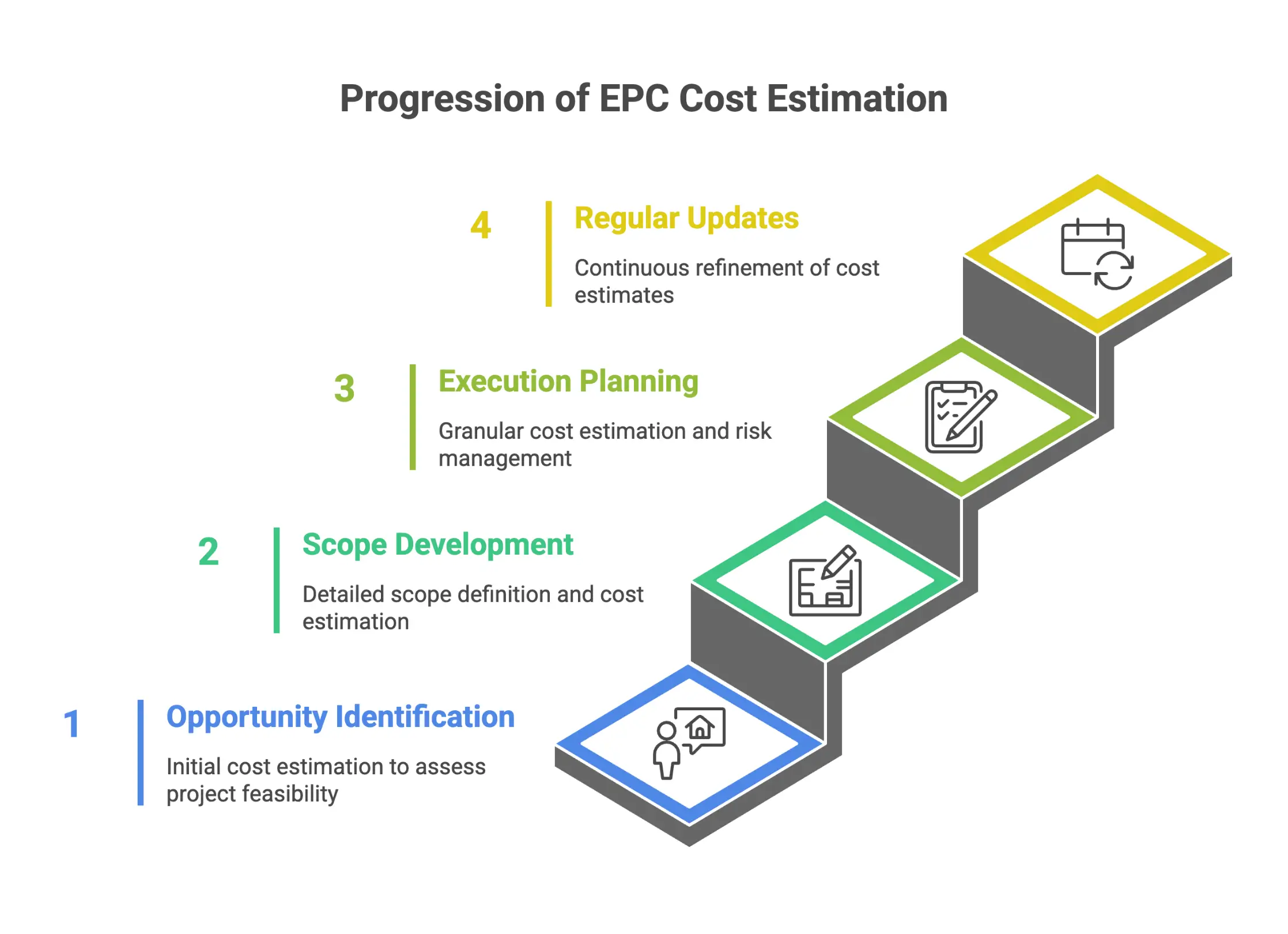

EPC Cost Estimating: Keys to Accurate and Successful Projects
TL;DR: Nailing your EPC cost estimation is central to project success. In this article, we’ll dig into why precise estimating is more than a technical exercise, what makes a truly reliable estimate, and how the right tools, data, and methodologies support better cost control. You'll find proven strategies and industry best practices for reducing risks and maximizing accuracy while aligning with project goals and budgets.
Why Accurate EPC Cost Estimation Matters
Imagine reaching the midpoint of an EPC project only to realize the project costs already far exceed the planned budget. This happens far too often, and the root cause usually lies in weak cost estimating at the start. In Engineering, Procurement, and Construction (EPC) projects, particularly in process industries, cost control is a daily struggle.
Project managers know the market is volatile, designs are fluid, and baseline data is scattered. A small error in the cost estimation process can unravel budgets, lead to cost overruns, cut into profits, and erode stakeholder confidence. EPC contracts are unique in that the contractor takes on significant delivery risk. This places even greater emphasis on estimation accuracy.
Bringing in modern cost estimating platforms like CostOS allows teams to collect data, benchmark actual costs against historical data, and establish a defensible cost baseline that guides financial planning. Let’s examine how robust EPC cost estimating shapes project execution and financial outcomes.
The Critical Role of Cost Engineering in EPC Projects
Cost engineering integrates careful cost estimation, budgeting, forecasting, and cost tracking to keep EPC projects on solid financial footing. Cost engineers play a vital role. They ensure technical, procurement, and construction aspects stay aligned with the approved budget and project scope.
EPC cost estimation isn't a single step. It's a layered estimation process, beginning with feasibility studies (such as AACE Class 5 estimates) and progressing to detailed design estimates once the project definition solidifies. The more detailed and accurate the project scope definition, the more precise your estimate will be. Consistent estimation accuracy helps mitigate risks by creating a realistic project contingency and controlling costs throughout each project stage.
How Cost Estimating Differs in Process Industries
Process industries, like oil & gas, chemicals, and power, demand especially rigorous estimation because small scope changes frequently have large cost impacts. Here, cost control is ongoing, leveraging digital tools, benchmarking, and the expertise of cost engineering professionals to maintain estimate accuracy across each phase.
The Fundamentals of EPC Cost Estimation
Understanding the Cost Estimation Process
Cost estimation is the process of forecasting all direct, indirect, and contingency costs required to execute an EPC project. It empowers teams to allocate resources, manage budgets, and communicate realistic expectations to all stakeholders. Accurate cost estimation aligns project goals with financial constraints and is the bedrock of project success.
Components of an EPC Cost Estimate
Your cost estimating framework should include:
- Direct Costs: Expenses directly related to construction, like labor, material costs, equipment, and subcontractors. These are the foundation of project cost estimation.
- Indirect Costs: Think overhead, site facilities, administrative support, and project management. These costs don’t show up in line items for physical work but are essential for execution.
- Contingency Costs: Unforeseen costs can derail the best-laid plans. Contingency accounts for risk, market volatility, and unknown site conditions.
- Escalation Costs: Long project timelines can mean higher material costs or labor rates by completion. Escalation is an allowance for such anticipated price increases.

The cost baseline is established by summing all these categories, providing a reference point for tracking actual costs as the project progresses.
The Project Scope: The Backbone of Estimation Accuracy
A well-defined project scope is essential for accurate cost estimates. In EPC cost estimating, vague or incomplete scope quickly leads to cost overruns and schedule delays. Project definition should be as comprehensive as possible, including every design element, discipline, procurement need, and construction phase, plus commissioning and startup. Relying solely on incomplete scope is a leading cause of inaccuracies.
Staging Estimates for Accuracy
Estimates evolve as the project progresses through key stages.
- Feasibility (Class 5): Early stage, limited definition, typically via parametric models or factor estimating. Used for initial decision making and assessing financial viability. Expected accuracy ranges from -50% to +100%.
- Front-End Engineering and Design (FEED): Project scope becomes more defined. Estimation shifts from analogous methods to more detailed approaches, incorporating historical data.
- Detail Design (Class 2): The scope is finalized. Bottom-up estimating quantifies every cost, creating the most accurate cost estimate with an accuracy range of about -15% to +20%.

As each phase delivers greater detail, the estimation process should regularly update estimates to refine contingency and support effective decision making.
Best Practices and Approaches in EPC Cost Estimation
Using Industry Standards and Estimation Techniques
Industry guidelines, like the AACE International’s 18R-97 Classification System, categorize cost estimates based on definition, project stages, and expected accuracy. This framework helps standardize estimates across the process industries and guides users in selecting the proper methodology for each phase.
Common Estimation Methods:
- Parametric Estimating: Uses statistical models tied to project variables. Effective early on with limited data.
- Analogous Estimating: Leverages historical costs from similar projects for quick rough-order estimates.
- Bottom-up Estimating: Builds the total project cost from detailed, quantified tasks and resources.

The choice among these methods depends on the project stage, quality of available data, and level of scope definition. Clear definition and appropriate methodology drive estimation accuracy.
Enhancing Project Cost Management With Collaboration and Technology
Stakeholder involvement is crucial throughout the estimating process. Engaging engineers, procurement teams, and construction management ensures every cost, risk, and scope detail is captured. Project controls, including budgeting, forecasting, and cost tracking, must be integrated to promote cost control and transparency throughout the lifecycle.
Technological advances now play a critical role. Centralized cost estimating databases, digital benchmarking, and BIM-driven takeoffs bolster accuracy and efficiency, limiting manual errors. Modern software automates cost engineering activities, integrates market data, and provides workflows tailored for EPC projects in process industries.
Stages of the EPC Estimation Process
Opportunity Identification and Feasibility Studies
Early cost estimation during opportunity identification and concept screening helps determine the financial feasibility of a project. Here, factor estimating and parametric models generate rapid, order-of-magnitude cost estimates based on limited scope and benchmarking to historical data. Such cases help decision makers quickly assess viability.
Scope Development and Front-End Engineering
As scope develops, estimates incorporate more detail. The FEED stage formalizes scope, solidifies project definition, and increases estimation accuracy. At this stage, analogous methods gradually give way to bottom-up cost estimation.
Execution Planning and Detail Design
By the execution planning and detail design phases, project managers and cost engineers conduct granular estimating, reviewing quantities, updating risk management plans, and adding project contingencies. Estimates should factor in construction schedules, procurement lead times, and escalation of material or labor costs due to market conditions.
Regularly Updating Estimates as the Project Progresses
One mistake is fixing estimates early and never updating them. As the project progresses, continue to refine and regularly update estimates based on actual costs, revised scope, and current market data. A stage gate approach, updating the estimate at each project milestone, ensures better accuracy and cost control.

Risk Management and Project Controls in EPC Projects
Integrating Project Contingency and Risk Analysis
Every EPC contract carries the risk of cost overruns and unforeseen challenges. Including project contingency in cost estimates helps manage these uncertainties. Effective use of risk analysis, scenario planning, and rigorous project controls ensures potential risks are anticipated and managed.
Project risks can sometimes be shifted from owner to contractor through the nature of the EPC contract. Cost engineering teams must actively monitor risk factors and revise contingency budgets as the project progresses, staying ahead of changing market conditions.
Importance of Project Controls
Project controls, a combination of budgeting, forecasting, monitoring, and change management, keep projects aligned with the approved cost baseline. Establishing robust project controls ensures early detection of deviations, allowing corrective action before small problems become major cost overruns.
Frequently Asked Questions About EPC Cost Estimating
What is the purpose of cost estimation in EPC projects?
Cost estimation is the process of forecasting the total cost required to execute an Engineering, Procurement, and Construction (EPC) project. It builds a foundation for resource allocation, stakeholder communication, and project success.
What are the main categories of costs in an EPC estimate?
Estimates should cover direct costs (materials, labor, equipment, subcontractors), indirect costs (project management, site facilities, administration), contingency costs (to absorb unforeseen expenses), and escalation costs (to address price increases over the project’s duration).
How does accurate cost estimation benefit EPC project delivery?
Accurate cost estimation enables cost control, keeps project costs within budget, reduces change orders, and aligns project execution with financial goals. This ultimately ensures project success.
Why is comprehensive project scope important during estimation?
A detailed project scope prevents missing costs, avoids overruns, and increases certainty in estimates. Poorly defined scope is the top cause of inaccurate estimates and project delays.
What techniques improve EPC cost estimation accuracy?
Utilize a combination of estimation methods, including parametric, analogous, and bottom-up, based on the project stage and data quality. Regularly update estimates as the project progresses, engage stakeholders, and adopt industry standards like the AACE 18R-97 Classification System.
How does technology support the estimation process in EPC projects?
Digital platforms and cost estimating software drive accuracy through historical data, benchmarking, BIM integration, and centralized management. They enhance efficiency and reduce manual errors.
What is the role of cost engineering in EPC projects?
Cost engineering integrates cost estimating, budgeting, forecasting, cost tracking, and change management. Cost engineers play a critical role in aligning scope with the approved budget and managing risks across the project lifecycle.
How does project contingency factor into EPC cost estimation?
Contingency costs are included to cover uncertainties and potential risks not accounted for in the detailed estimate. This helps absorb unforeseen events and keeps the project on track.
How do project controls help manage EPC budgets?
Effective project controls ensure estimates align with actual costs, detect deviations early, enable timely corrective action, and ensure that project execution remains within financial constraints.
What is the importance of involving stakeholders in the estimation process?
Stakeholder involvement provides insight from all disciplines, ensures comprehensive scope coverage, and enhances the accuracy and buy-in for the project’s cost baseline.
How can you assess the financial viability of an EPC project early?
Early estimates, even when rough, allow stakeholders to quickly evaluate financial feasibility and make go/no-go decisions before investing in detailed design work.
Why do estimates become more accurate as projects progress?
As designs are finalized, quantities detailed, and risks assessed, estimates shift from wide-ranging approximations to precise forecasts using bottom-up approaches and thorough data analysis.
What role does escalation play in managing EPC project costs?
Escalation provides an allowance for anticipated increases in material costs, labor rates, or other expenses due to changes in market conditions over the life of the project.
How does an EPC contract impact risk and budgeting?
EPC contracts often transfer substantial risk from the owner to the contractor, requiring greater accuracy and completeness in cost estimation and risk management.
Ready to Take the Next Step?
Looking to elevate your EPC cost estimation and cost control strategies? Browse Nomitech’s entire suite or reach out to our team to explore the latest digital tools for improving estimation accuracy and delivering successful EPC projects.
References




